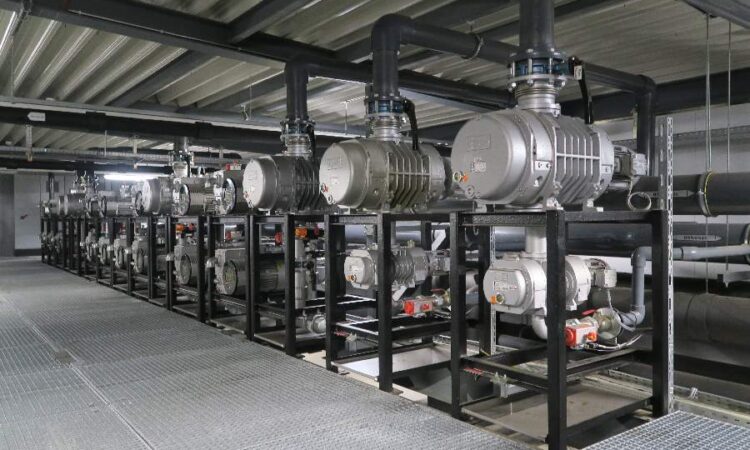Linear motion stage development within vacuum systems is essential to reaching the required pressure in the vacuum chamber. Understanding how linear stage motion happens provides greater insight into why the correct position control method is important. Making the choice between manual and motorised control can have a major effect on the precision of the stage.
In a linear stage, the motion of an object is restricted to a single axis. The stage comprises of a platform and a base joined by a guide. It is the role of the guide to restrict the motion of the platform to purely linear motion in relation to the base. Guide type vary between different linear stage constructions depending on the application of the stage. Types commonly include ball bearings, roller bearings, flexures, cylindrical sleeves and dovetails. Each has a different set of advantages and applications. Bearings are the guide most commonly found within linear stages used as part of UHV systems, as are valves, like a 2 way solenoid valve. As well as a guide, a position control method is required. Again, there are a variety of methods that can be used including a manual version using an indexed control knob and a fine-pitch screw or micrometer. However, to ensure precision, and to reduce the risk of human mistakes, a motorised control version is often employed in ultra high vacuum systems. This role is performed by a stepper motor. Its ability to move in very small fixed increments provides unsurpassable levels of control and accuracy. High quality stepper motors also benefit from open construction, wide operational temperature ranges and bakeability.
Understanding the Control System
Manual linear stage involves the movement of a platform relative to a base. Movement is restricted to one-dimension by the use of a guide, often a bearing of some kind. In both motorised and linear versions, a linear actuator or control form is also needed. Understanding how the manual control system works will help determine whether it is right for your needs.
In a manual linear stage, control is usually achieved by a control knob that is attached to a lead screw. The knob can be indexed in order to indicate its precise angular position. The linear movement of the stage is then actioned by the pitch of the lead screw, which determines the angle of movement of the control knob. For example, a lead crew with a pitch of 0.5mm would mean that one full revolution of the control knob will effect a 0.5mm move in the stage platform, relative to the stage base. In this example, if the control knob had 50 index marks around its circumference, each would be equivalent to 0.01 mm of linear motion in the stage platform. In systems that require even greater precision, a fine pitch screw or micrometer is used instead of the lead screw. In these cases, the fine pitch screw puts pressure on a hardened metal pad on the stage platform. The platform is moved through rotation of the screw (or micrometer). The platform is kept in contact with the actuator through a restoring force provided by a spring. This enables greater precision of motion. In UHV systems, this manual control method is often replaced or supported by a stepper motor to provide even greater precision and control over the linear movements.





